Sins of a Solar Empire Q&A - Gameplay, Story, and Factions
Producer Blair Fraser spills the dirt on this ambitious real-time strategy game about interstellar warfare.
Outer space is an enormous place, which is why most space strategy games tend to be turn based. After all, the thought of managing interstellar fleets and multiple worlds spread over vast distances in real time sounds pretty daunting. That's not stopping Stardock and developer Ironclad Games from working on Sins of a Solar Empire, an intriguing real-time strategy game about interstellar warfare. With its eye-catching starship battles and huge scope, Sins is one of the more innovative strategy games on the horizon. We caught up with producer Blair Fraser for in-depth details on this promising strategy game. Unfortunately, we'll have to wait a lot longer than anticipated for Sins, as we have confirmed that the game will miss its summer release and is now being readied for a February 2008 ship date.
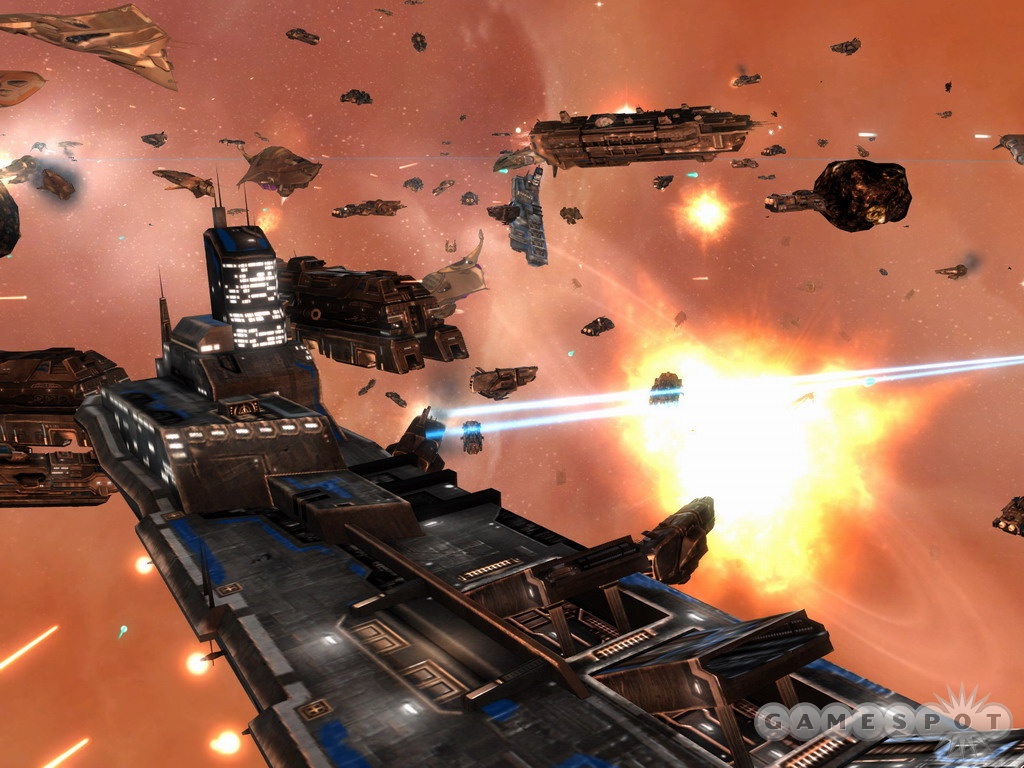
GameSpot: Sins of a Solar Empire is a pretty unique game, even for the space strategy genre. How do you describe it to others?
Blair Fraser: Imagine conquering multiple star systems, each filled with giant planets, by commanding massive fleets of warships and establishing a sprawling interstellar trade empire. Picture being able to zoom in on a single fighter in one of your fleets and then seamlessly zooming out to see the entire fleet, its position around a planet, the whole solar system containing that planet, and then an entire galaxy full of many such solar systems. To put it in perspective, a fighter's length is 25 million times smaller than the distance between two solar systems. Epic scale, seamless zooming, tactical fleet combat, and strategic empire building all in real time--that's Sins.
GS: What was the inspiration for Sins? No one has really made a grand, real-time space strategy game like this before. After all, these games are usually turn based because they're so big.
BF: The first spark of inspiration came from an old board game that we played to death during our misspent youth. Called Buck Rogers - Battle for the 25th Century, it featured fleets that went around conquering the solar system, with the main characters from the franchise acting as special hero units that had unique capabilities. Back then, we wanted to make a computer game like that but had no idea how it would work, or even how games were made. Over the next 15 years, we'd fill in most of the pieces, as we played a huge variety of 4X (eXplore, eXpand, eXploit, and eXterminate) games like Spaceward Ho!, Master of Orion, and VGA Planets, and, as the technology advanced to make them possible, real-time strategy games like Warcraft, Starcraft, and Homeworld.
At some critical point a few years ago, well after we'd become game developers, we had the idea that we should combine our two favorite game types into the game we always dreamed about. The problem, as you pointed out, is that the two genres don't appear readily compatible, and in some areas they are polar opposites. It took a great deal of work and innovation to merge them in a way that draws on each one's respective strengths.
GS: What is the game like? What are you typically spending your time doing in the game? How do you make it so it's not completely overwhelming managing so much stuff?
BF: Players typically spend a large part of their time directing fleets of starships from planet to planet, doing battle with any defenders in orbit and claiming it as their own after bombing any resistance off the surface. In between, players will spend time developing the planets under their control, investing in their trade networks, conducting research, and perhaps striking a treaty with another empire.
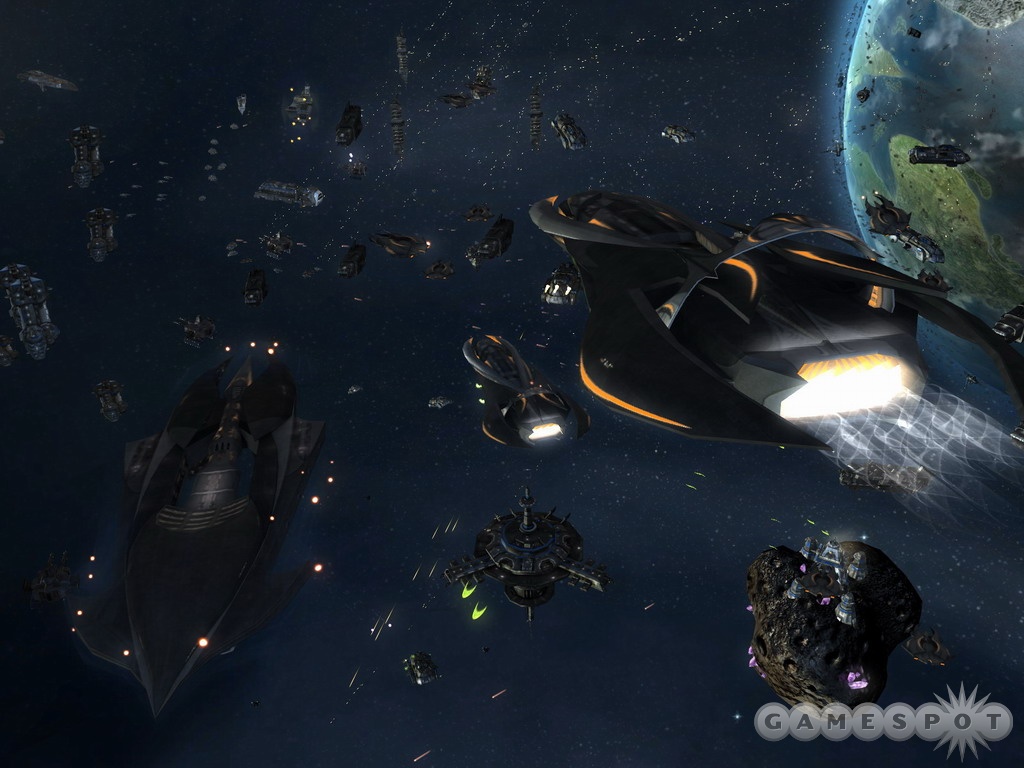
To keep it all manageable, we've tackled the problem from three directions: pacing, automation, and user interface. Sins plays at a less hectic pace than most RTS games in order to allow players more time to interact with all the gameplay elements. Automation occurs on many fronts, but as an example, consider combat. You don't have to micromanage combat; the tactical artificial intelligence can handle the situation for you. If you go this route, you have a lot of choice with respect to how you want the ships to behave. This would include such options as auto-attack, attack ranges, auto-fighter building, auto-use of special abilities, and automatic upgrading. In combination with this, there are many advanced user-interface options such as infinite waypoints, infinite attack target queuing, infinite build queuing, queuing of units/structures/research before their dependencies are even completed, smart icon transitions for zooming, and auto-adding to control groups with rallying, to name just a few. By far the most important user-interface tool is the addition of the innovative empire tree.
This empire tree allows you to view and control every entity (planets, ships, structures, and so on) in your empire, regardless of your camera position or zoom level. Its core design is that of a collapsible and expandable hierarchy where expanding each node in the tree reveals more detail and collapsing a node reduces detail. For example, at the first level you would just see one of your planets with rows of pips beside it, which abstractly represent the magnitude of your forces there. If you expanded it, you would see those pips turn into detailed icons of all the ships and structures with appropriate summary information. You can select these units in either their icon or pip form and manipulate them just like you would if you selected the actual models in the main view. This makes it very easy to manage one battle in the main view and others from the empire view. I typically select all my ships at a planet with the empire tree and queue them up to attack enemy ships that are also in orbit around that planet, all without moving my camera or losing attention from the more important battle I'm managing.
Sins may be an empire-level real-time strategy game with lots to do, but the tools to make it all manageable are there.
GS: The last we heard, there are three factions in the game. There's a human faction, an alien faction, and a third faction. Has this changed since last October? What can you tell us about them?
BF: The three playable factions haven't changed since October, and they are the Trader Emergency Coalition (human), the Advent (human), and the Vasari (aliens). Biologically, the Advent is still human, but its culture and technology are just as alien as those of the Vasari.
The TEC is an increasingly more organized and powerful organization that was initially formed to combat the arrival of the Vasari. The majority of its fleet consisted of antiquated merchant and civilian vessels that were hastily converted into warships and were armed relatively crudely with conventional kinetic and nuclear weapons. By the time of the events in Sins, the TEC has fast-tracked its arms program and rolled out up-to-date ship designs and defenses. Where the TEC falls behind in military technology it makes up for in economic proficiency, especially with trade and production.
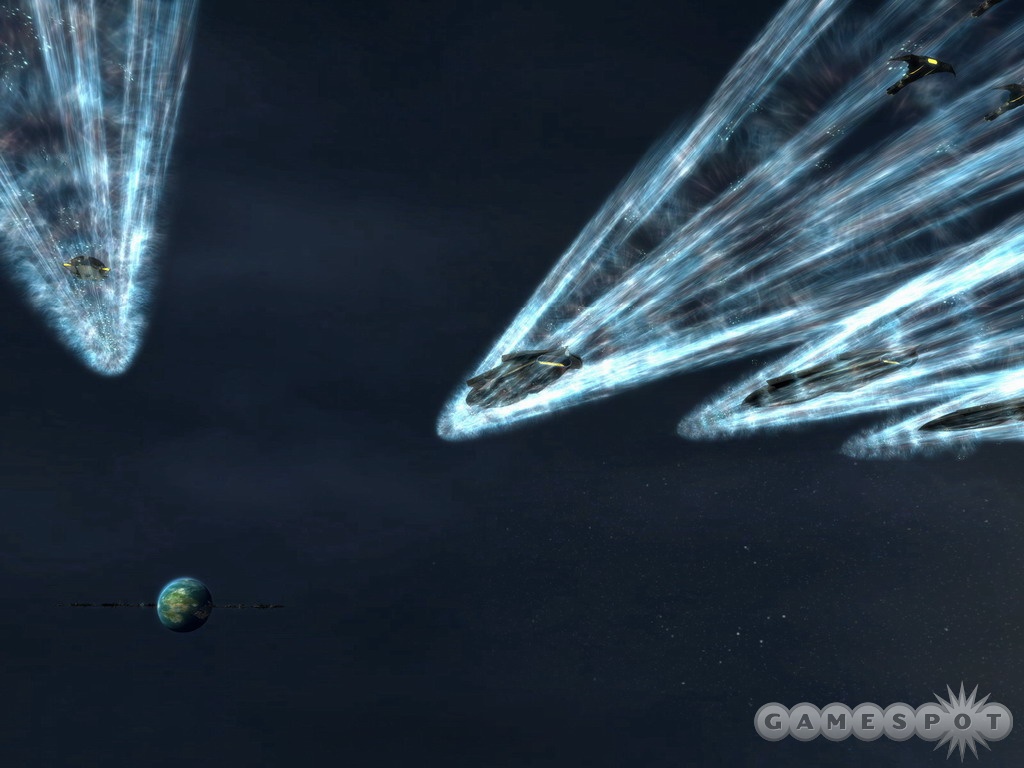
The Advent are pre-Trade Order humans that were exiled and have now returned to find their brethren in a war against the Vasari. During the exile, Advent culture and technological evolution took a much different path, and it has mastered a radical new technology known as PsiTech. By amplifying and controlling the Advent's artificially engineered psionic powers, PsiTech is a powerful cultural, tactical, and strategic weapon. Advent ships sacrifice some survivability in order to support specialized equipment that their psionically gifted crews can harness in unison for a variety of attacks on enemy ships and even entire populations.
A truly ancient race, the Vasari once ruled a quarter of the galaxy. With its civilization in its twilight, the Vasari mastered survival with minimal resources, resource extraction, and unit conservation. While Vasari fleets are small and expensive, its technology is far superior to anything the other factions can produce. In particular, the Vasari's advanced manipulation of "phase space" and gravity is put to great use for stealth, misinformation, hit-and-run tactics, and all-out engagements.
Star War
GS: Is there a story or background to Sins? What caused this interstellar war? Will you play as one faction during the campaign, or will you be able to play as any of the factions? 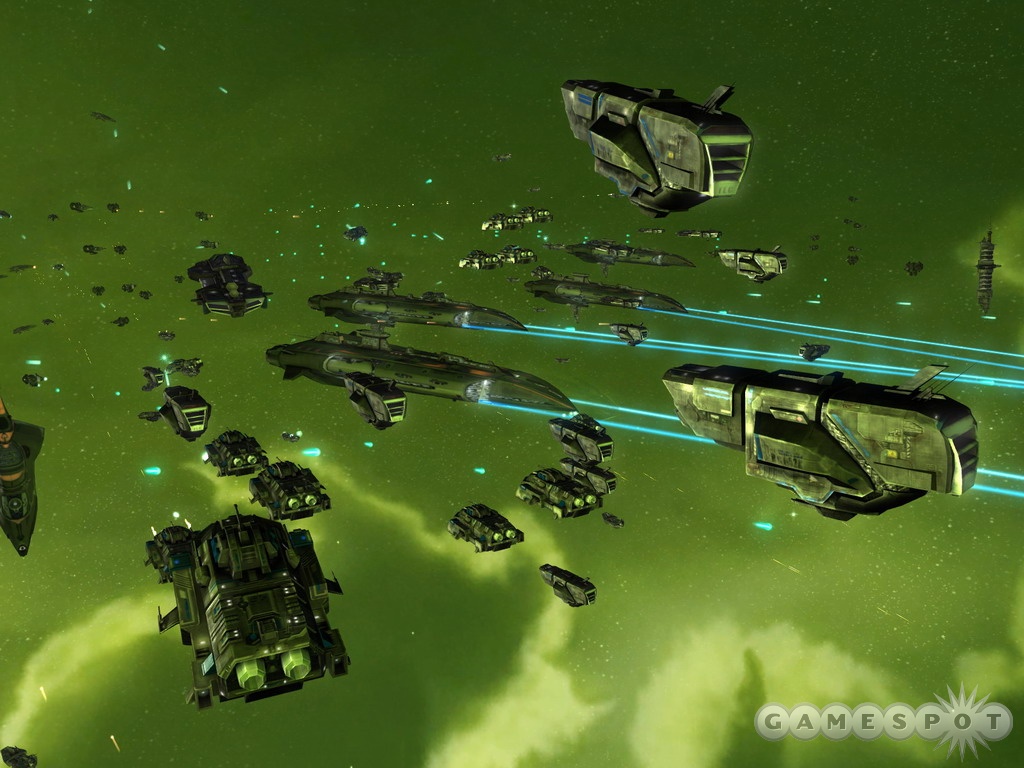
BF: The background story of Sins begins when the alien Vasari empire is decimated by some unknown means. The survivors of that civilization began fleeing to the outskirts of the galaxy, only stopping often enough to acquire new resources to fuel the next leg of their exodus. Millennia later, they make a scheduled drop out of phase space into an area controlled by what seems to be yet another insignificant species. Initially, the Vasari's resource acquisition proceeds on schedule; the attempts by the locals to thwart the indiscriminate and unintentional genocide are as futile as that of every species before them. Unfortunately for the Vasari, the harvesting efforts begin to stall as it moves farther and farther into the locals' territory. Resistance mounts as the locals begin to organize and adapt. Years later, the Vasari find themselves unable to extricate themselves from a near-stalemated war whose end is nowhere in sight. The Vasari still haven't acquired the necessary resources to move on, and time is running out. They are desperate indeed, perhaps even more so than these humans of the Trader Worlds.
When the Vasari first arrived, the humans of the independent Trader Worlds were only loosely organized by the Trade Order, which operated as more of a standards and arbitration body than as the center of imperial power. After 1,000 years of relative peace and economic prosperity, humanity's knowledge of warfare and technology stagnated at the minimum level required to deal with ruffians, commercial pirating, and isolated cases of minor population unrest. The initial Vasari incursions were bloodbaths. In a desperate move, many of the Trader Worlds agreed to temporarily sacrifice their independence and place themselves under the control of the Trader Emergency Coalition, a hastily formed military organization with broad powers and a clear directive to eliminate the threat. After many years, the TEC gradually experienced increased success at countering the invasion and almost reached a point of stalemate. But now, 10 years since the beginning of the Vasari-Trader War, a new yet strangely familiar opponent arrives unexpectedly.
To explain the origins of the new force, it is necessary to skip back 1,000 years, to the founding of the Trade Order. During this period, emissaries for the newly formed organization were sent to explore the local sector of the galaxy and recruit any populated planets. Historians, scientists, and common folklore all pointed to the likelihood of these lost colonies and indeed many were found. On one of these long-forgotten worlds was found an entire society practicing the utmost in social and scientific deviancy as judged by the strikingly consistent values of many of the old and newly found populated worlds. In disgust and revulsion, the entire planet was rounded up and exiled into deep space. Back in the present day, it is the descendants of these people, now called the Advent, that have returned. Not much is known about where they are returning from, but it is clear that they do not intend to join the Trade Order and support their brethren against the Vasari. Rather, they seem zealously eager to fulfill a long-held manifest destiny that calls for the delivery of their ethnocentric ideals to their lost brothers so that they, too, will be lifted out of cultural barbarity and join their glorious telepathic democracy.
Sins picks up as the TEC is confronted with a two-front war, facing the desperate Vasari on one side and the fanatical Advent on the other. Players will be able to control any of the three major factions in either multiplayer or single-player sandbox mode.
GS: You'll research technologies that let you build more powerful warships; however, Sins uses stock designs, as you won't be able to custom design your ships like in other space strategy games. What was the reasoning behind this?
BF: There is no customization of the smaller ships classes; however, there is minor customization of the larger capital ships. Capital ships can be renamed, and as they gain levels through experience or through training, you can choose special abilities for them. We chose this route for ship customization because we felt more free-form ship design would take too much game time to be viable in a real-time multiplayer match. And while it's not exactly in-game ship design, we have gone to great lengths to make it very easy to mod new ships with custom graphics, weapons, and functionality.
GS: Could you get into the bounty system a bit? It sounds like a cool way of stabbing someone in the back. And what are some of the other diplomatic options that are at your command?

BF: One of the most frustrating things in any free-for-all multiplayer game is when it is clear there is a dominant powerhouse, but you can't convince anyone to help you take it down and reestablish the balance of power. In response to that, we've come up with the bounty system. Players can direct credits to increase a pool of bounty against another player. If you destroy any of that player's structures or ships, you earn credits out of the pool proportional to the value of the thing you destroyed. A key point that is essential to the wonderful world of backstabbing is that the placing of bounty is anonymous. It is possible to be in a trade pact with a player but at the same time be using the profits of that venture to make the bounty against your trade partner more and more lucrative, inciting others to attack him. Another interesting twist is there is a non-player-controlled faction called the marauders (a mix of opportunists and rebels who disagree with the coalition's policies) who respond to bounty levels, among other things. As a final note, bounty can become a viable way for an economically focused player to get his dirty work done without firing a shot.
We haven't finalized all the other diplomatic options, but the current beta includes the basics of resource transfers, cease-fire, shared vision, and trade pact. The next beta will likely be testing some new options, including free passage, which will allow both members to phase jump from a given gravity well that would normally be blocked by the other player's phase jump inhibiter.
GS: The game's looking pretty impressive. What sort of system requirements are you looking at? Will the game take advantage of dual-core CPUs or DirectX 10? Will there be advanced ship physics?
BF: We've been getting great response from our first beta, whose main objective was to test the technical capacity of the game. This was really important to us considering the size and scale of the game and the potential number of units. We still have a lot of optimization to do, but the beta has confirmed that it has been very stable, runs smoothly, and looks great on a wide variety of machines, even on our minimum spec machine of 1.8GHz, 512MB RAM, and a 128MB video card. There is no special dual-core code and the Iron Engine does not yet support DirectX 10, though we are considering adding these features postrelease. The ships use full Newtonian mechanics, but this is all calculated in software on the main CPU. Regardless, as the beta testimonials and screenshots show, it is quite possible to get insane numbers of units flying around and still hold a decent frame rate.
GS: We do know that there will be multiplayer, but we don't know much beyond that. What details can you shed on multiplayer? Will you be able to play the entire campaign online against others?
BF: Sins multiplayer was planned from day one, and we've been testing it for over a year now, so by the time it's released, it should be very well balanced and stable. We really want to create a lively online community that appeals to a variety of player types. Up to 10 players will be able to play in any given game over LAN or Ironclad Online (ICO), our matchmaking, ladder-ranking, and statistics-tracking service. Not all players are competitive, and some may just want a place to try out new strategies without mangling their ranking, so it will be possible to play non-ladder games as well.
The Ironclad-sanctioned ladder matches will have very specific galaxy-creation formats and player modes, such as one-versus-one, two-versus-two, and free for all, but casual gamers can set up their online matches however they prefer. Some options include adjusting the number of players (artificial intelligence and human), any galaxy-creation parameters (resource levels, flagships, bounties, number of planets, and so on), game-termination conditions, locked or unlocked teams, the option for observers, recorded games, and so forth. One issue that we're aware of is that it's possible to create Sins games that can take anywhere from many hours to days to complete. Even with saved games in multiplayer supported, this isn't really practical for online play. In response, we will be providing some additional game-creation parameters that will keep the time commitment down for those who want it. We're confident that casual, hardcore, and competitive players will all find a fulfilling multiplayer experience with Sins.
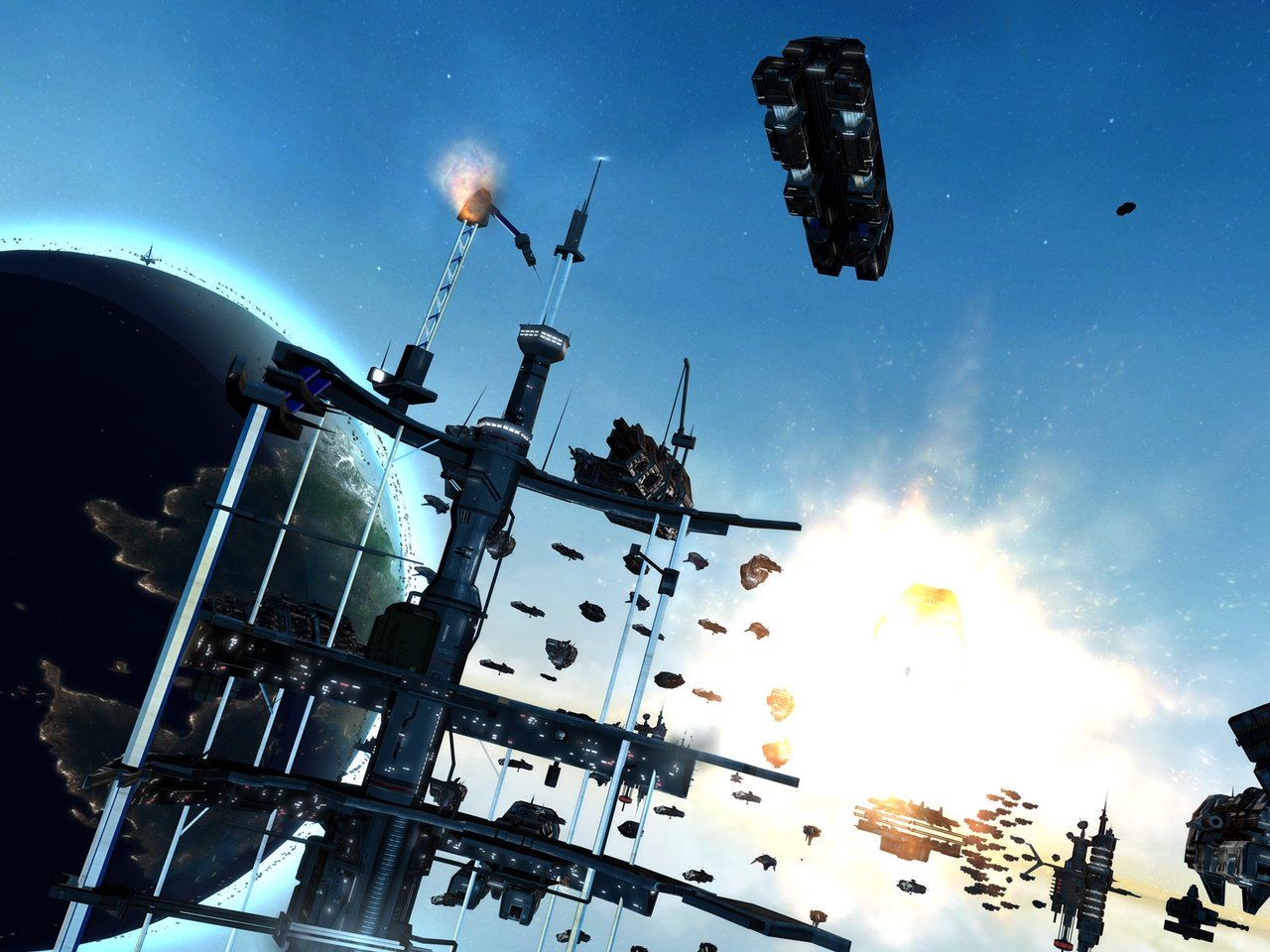
GS: Finally, where's the game at in development, and when can we expect it to ship?
BF: We are currently working on the second phase of our beta, which will start to address any major gameplay concerns. After that, we have a multiplayer technical beta planned and then, finally, a multiplayer-balancing beta. These will likely all be distributed equally over the remaining time period before our February 2008 release. We are very interested in getting in tons of testing and player feedback--we want the Sins that you buy and take home to be as robust as possible. This means no show-stopper crashes, maximum compatibility, seamless access to online play, no release patch, and above all, fun and balanced gameplay right out of the box.
GS: Thank you.
Got a news tip or want to contact us directly? Email news@gamespot.com
Join the conversation